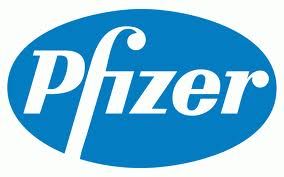预约演示
更新于:2025-05-07
L-sel x E-sel x P-sel
更新于:2025-05-07
关联
2
项与 L-sel x E-sel x P-sel 相关的药物作用机制 E-sel抑制剂 [+2] |
在研机构- |
在研适应症- |
最高研发阶段终止 |
首次获批国家/地区- |
首次获批日期1800-01-20 |
作用机制 E-sel抑制剂 [+2] |
在研机构- |
原研机构 |
在研适应症- |
最高研发阶段无进展 |
首次获批国家/地区- |
首次获批日期1800-01-20 |
6
项与 L-sel x E-sel x P-sel 相关的临床试验EUCTR2009-017257-35-DE
Multi-center, randomized, double-blind, placebo-controlled, cross-over Phase II study to evaluate the safety and efficacy of inhaled Bimosiamose for the treatment of patients with moderate to severe Chronic Obstructive Pulmonary Disease (COPD)
开始日期2010-02-25 |
EUCTR2009-013163-18-DE
A double-blind, placebo controlled, randomized, cross-over Phase IIa study to evaluate the effect of Bimosiamose on ozone induced sputum neutrophilia in healthy subjects.
开始日期2009-08-11 |
EUCTR2008-000197-20-DE
Multi-center, randomized, double-blind, placebo-controlled Phase 2 study to evaluate the safety and efficacy of Bimosiamose 5% Cream for the treatment of patients with chronic plaque type psoriasis - Psoriasis POC
开始日期2008-11-28 |
100 项与 L-sel x E-sel x P-sel 相关的临床结果
登录后查看更多信息
100 项与 L-sel x E-sel x P-sel 相关的转化医学
登录后查看更多信息
0 项与 L-sel x E-sel x P-sel 相关的专利(医药)
登录后查看更多信息
303
项与 L-sel x E-sel x P-sel 相关的文献(医药)2024-12-01·International Journal of Developmental Neuroscience
Decreased levels of L‐selectin and platelet‐endothelial cell adhesion molecule‐1 in children with autism spectrum disorder
Article
作者: Seyithanoğlu, Muhammed ; Altun, Hatice ; Arslan, Semiha Cömertoğlu ; Taş, Dilan ; Doğaner, Adem ; Arslan, Feyzullah Necati ; Islah, Elif Milhan
2024-11-01·Journal of Surgical Research
Amitriptyline Decreases Mouse Lung Endothelial Cell Inflammatory Responses to Packed Red Blood Cell Microparticles
Article
作者: Chae, Ryan ; Nguyen, Christopher ; Wattley, Lindsey ; Schuster, Rebecca ; Caldwell, Charles ; Goodman, Michael ; Pritts, Timothy A ; Lentsch, Alex
2024-09-01·Osteoporosis International
The association of microvascular disease and endothelial dysfunction with vertebral trabecular bone mineral density
Article
作者: Carbone, Laura ; Buzkova, Petra ; Kestenbaum, Bryan ; Budoff, Matthew J ; Mukamal, Kenneth J ; Cotch, Mary Frances ; Bielinski, Suzette J ; Barzilay, Joshua I ; Austin, Thomas R
分析
对领域进行一次全面的分析。
登录
或

生物医药百科问答
全新生物医药AI Agent 覆盖科研全链路,让突破性发现快人一步
立即开始免费试用!
智慧芽新药情报库是智慧芽专为生命科学人士构建的基于AI的创新药情报平台,助您全方位提升您的研发与决策效率。
立即开始数据试用!
智慧芽新药库数据也通过智慧芽数据服务平台,以API或者数据包形式对外开放,助您更加充分利用智慧芽新药情报信息。
生物序列数据库
生物药研发创新
免费使用
化学结构数据库
小分子化药研发创新
免费使用
